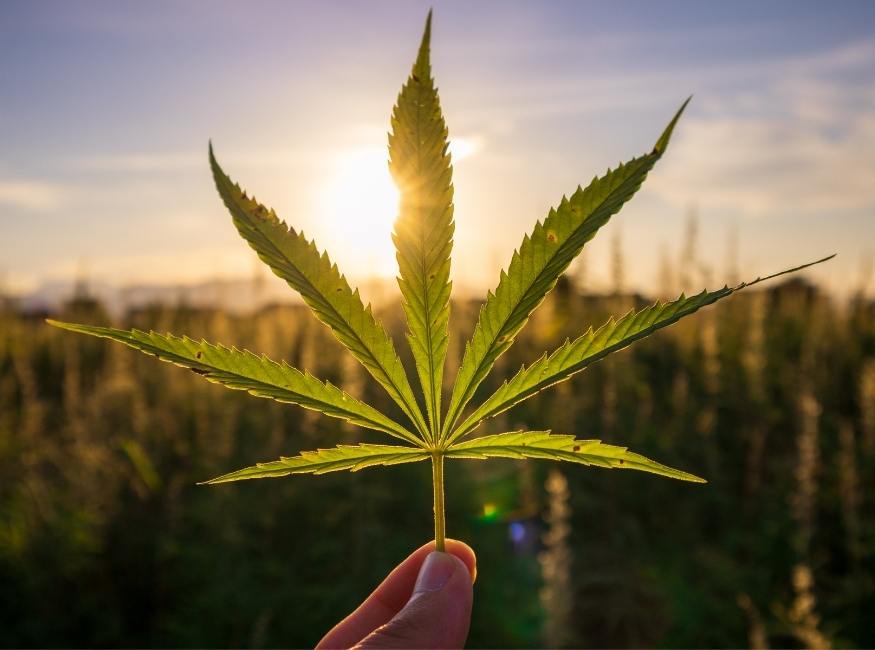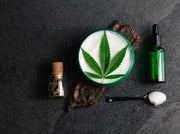With the relatively recent passage of the Agricultural Improvement Act of 2018 (the so-called Farm Bill) and sweeping marijuana legalization, it’s easy to forget what a contentious history the hemp plant had in American culture. These days, it seems like everyone’s taking a CBD gummy or chatting about the benefits of medical marijuana, but it wasn’t always that way.

What Is Hemp?
“What Is Hemp?” The answer to the question can be extremely simple or complex depending on whom you ask. For example, the average person might tell you that hemp is a plant with a tall sturdy stalk and flowing buds. However, the United States government might say that hemp is defined as a cannabis sativa plant that has less than 0.3 percent THC by dry weight.
Both of these answers are technically correct. They show just how far hemp has to go to overcome the stigma of its cousin marijuana and prove its usefulness to society. And because of how difficult it can be to get a solid answer as to what hemp is, the only accurate way to understand is to look at the history of hemp and where it is today.
Going back more than 10,000 years, hemp is one of the first cultivated crops in history. It was grown for food, fiber, and oil and was considered a staple in America before later being criminalized in the United States.
So how exactly did this equally versatile and sustainable crop play such a huge role in America? Let’s take a moment to get familiar with the long history of hemp in America as we also explore what brought about its decline and eventual comeback in the U.S.
Pre-American Use of Hemp
Bits of hemp fabric were found as far back as 8000 BC in modern day China and Taiwan. Records show that hemp seeds and oil were used as food in China. Evidence also has shown religious documents ranging from Hinduism to ancient Persian religions mentioning hemp as a “King of Seeds.” It was believed to be a key ingredient in everyday life and used to make essentials including ropes, clothes, paper, and shoes.

The Use of Hemp in Colonial America
Before the arrival of European settlers, hemp was being cultivated by Native Americans in the New World due to its durability and the strength of its fibers. Native Americans grew the crop to produce clothing, thread, paper, and cordage as well as hemp food.
When the English set sail across the Atlantic to establish colonies, one of the main focuses was on growing cash crops to send back to England for sale. Many of us learned about Virginia and their plentiful tobacco harvests, but many don’t realize that hemp was nearly just as important. In fact, many other colonies, including Georgia, Massachusetts, and Connecticut, grew hemp as a valuable cash crop; some even made growing hemp mandatory. Even George Washington once told a plantation manager to let hemp “grow everywhere.”
In the 17th and 18th centuries, farmers were legally required to grow hemp as a staple crop. Later, it was exported to England where it was used for books, clothing, shoes, sails, and tents. Hemp was even considered a legal tender that could be used to pay taxes during this time.
Benjamin Franklin began one of America’s first paper mills with hemp. And according to some historians, Thomas Jefferson wrote the first drafts of the Declaration of Independence on hemp paper.
Hemp’s Role in the 19th and Early 20th Centuries
Throughout the 19th century, the production of hemp continued to increase and spread across more states in America, including California, Nebraska, and Illinois. Technological innovations such as the decorticator machine, which helps with separating the cannabis stalk’s woody inner core from the exterior bast fibers, improved the efficiency of the harvest and manufacturing processes. In the beginning of the 20th century, the hemp industry in America was at an all time high, and it was even projected that domestically grown hemp could grow to be worth $1 billion!

Decline of the American Hemp Industry
Due to hemp’s genetic relationship to marijuana (and some people’s inability to comprehend the differences between the two plants) individual states, as well as the U.S. Federal government, began to criminalize all cannabis, therefore restricting its growth.
With the passage of The Marijuana Tax Act of 1937, hemp in the U.S. began to see a huge downturn. This act prohibited the consumption of cannabis and heavily regulated hemp production, only allowing government-approved hemp producers to grow or sell a certain amount.
Hemp’s Short-Lived Revival During WWII
The hemp industry in the U.S. experienced a short resurgence during World WarII when Japan severed hemp supplies from the Philippines.
The federal government launched a pro-hemp campaign. The campaign looked to encourage American farmers to grow hemp for the war effort by releasing an educational film produced by the Department of Agriculture, “Hemp for Victory.” The campaign also included the distribution of 400,000 seeds. The crop’s strong industrial fibers were used to produce products for the army and navy such as cordage, rope, and cloth.
From 1942 to 1946, American farmers from Wisconsin to Kentucky produced 42,000 tons of hemp annually. While this was seen as a possible revival of the hemp industry in America, that hope would prove to be short lived. When the war was over many domestic paper, rope, and textile manufacturers lobbied against hemp production. Hemp being affordable and effective would destroy their industries’ profits. THe lobbying worked, and after the war growing hemp was strictly regulated causing demand to drop. Shortly after that, hemp would all but disappear from American farms.

Hemp Today
In the early 2000s, the 9th Circuit Court of Appeals ruled that the Drug Enforcement Administration (DEA) didn’t have the authority to regulate certain parts of hemp (including sterilized hemp seed, hemp seed oil, and hemp fiber) under the Controlled Substance Act. This meant that hemp could still be imported and those specific parts of the plant could be used for products.
In 2014, the Farm Bill was passed. It allowed states to implement laws allowing universities and state departments of agriculture to grow hemp for pilot programs or research.
As it turned out, those pilot programs were a resounding success. The success led directly to the landmark 2018 Farm bill which expanded the previous law and ultimately allowed for all industrial hemp production.
The law made it legal for U.S. farmers to grow, process, and sell hemp commercially, and it also legalized hemp nationwide for any use, including….yes, you guessed it, the extraction of CBD oil.
The Hemp Industry Today
In 2016, the nation’s hemp market was valued at more than $668 million; currently the hemp-derived CBD market is on track to reach $22 billion by 2023. Not only can hemp help improve soil health by reducing the need for synthetic herbicides, but its strength and durability can be used to make building materials, paper products, and textiles.
It also contains a compound, CBD (cannabidiol.) CBD products are made by extracting the cannabidiol compound from the hemp plant. In other words, without hemp, there would be no CBD.

Legalizing CBD Products
Because of its murky legal background, the legality of CBD has been a controversial subject for many years. As of now, the substance is highly regulated yet legal in most states. That means that the general public can now experience many of the once suppressed health and wellness benefits of CBD.
Rectifying Three Popular Hemp Myths
1. Hemp Gets You High
False. Even though hemp is technically cannabis, industrial hemp must contain less than 0.3 percent THC, which is well below the amount it would take to feel any sort of high. That’s why hemp products like CBD oil have become so popular, because they allow you to experience the potential benefits of hemp without the risk of intoxication.
With that said, the small amount of THC in hemp can be extracted and purified to the point of being intoxicating if you take enough of it. So if you’re choosing a product with THC or anything called hemp “extract” be sure to look at the exact composition on the label or on lab testing results.
2. Hemp and Marijuana Are the Same
False. It’s been mentioned before in this article, but it always bears repeating: even though hemp and marijuana both come from the cannabis plant, they are not the same. Beyond the many differences in how they are grown, the most crucial difference is that industrial hemp contains only the smallest trace of THC.
Industrial hemp also grows much taller than marijuana and has thicker, sturdier stalks, which makes hemp a great choice for making things like rope, paper, and other textiles.
3. Hemp is a Drug
False. Simply put, hemp is a plant. Even though a drug (Epidolex, used in cases of childhood epilepsy) has been made from the plant, hemp itself is just a resource. Whether it is turned into rope, CBD oil, building materials, or epilepsy medication, the plant is still the same
Except for Epidiolex, hemp based products do not require a prescription. Hemp is also not considered a “street drug” either, because it doesn’t contain enough THC to make users intoxicated.
So by definition, hemp is not a drug
Hemp in the Future
Thanks to the newfound desirability of hemp, cultivating this useful plant can help to not only improve the livelihoods of organic farmers, but also those looking to find relief from their discomforts with a natural alternative. There is a whole wide world of hemp-related possibilities, and at TruHarvest Farms we are excited to see what might come of this new acceptance of hemp products in America.



